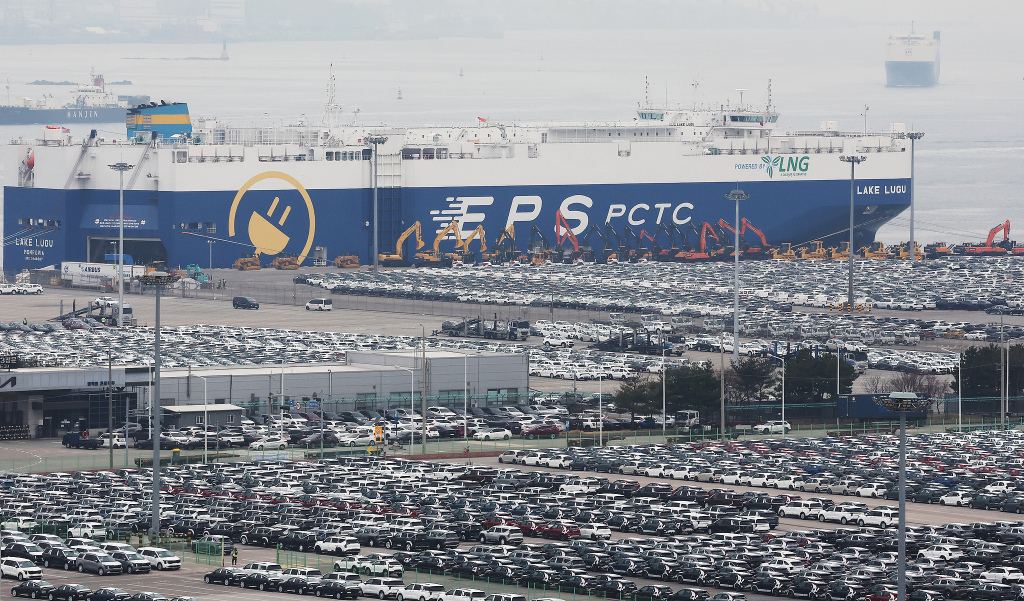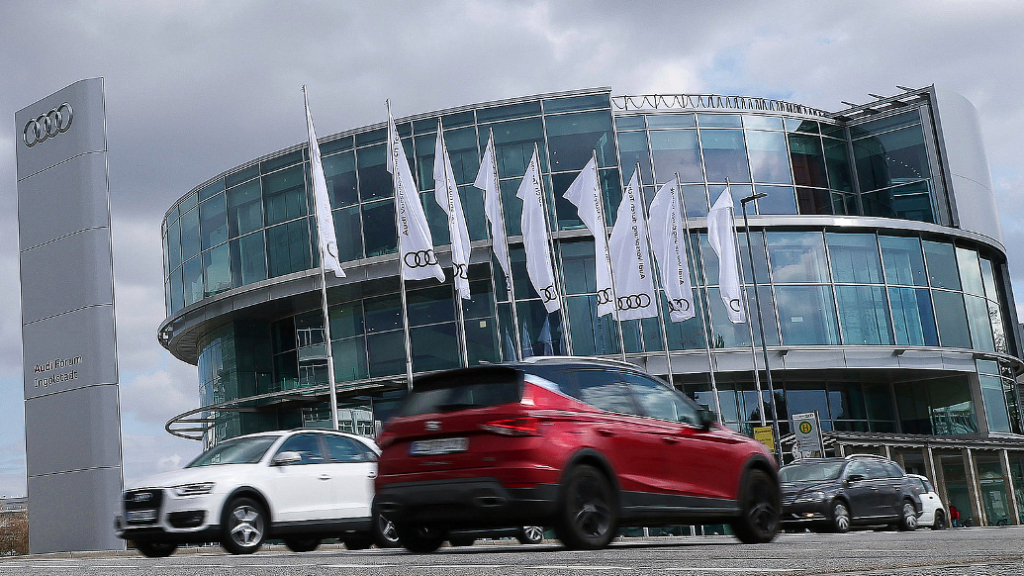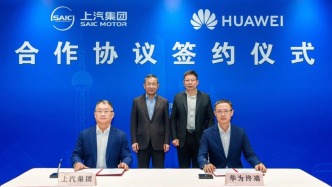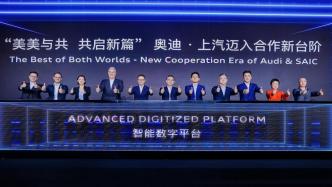
On May 20, a "small but beautiful" day for ordinary people, a major event that will affect the pattern of China's new energy industry is brewing.
Following the signing of a memorandum of understanding on deepening strategic cooperation in July 2023, SAIC, SAIC Volkswagen, and Audi officially signed a cooperation agreement, and the joint development of the Advanced Digitized Platform (hereinafter referred to as ADP) intelligent digital platform was officially launched. Since then, Audi has become the first luxury brand to jointly develop new electric vehicles with a Chinese car company.

On the pier of the North Bund International Passenger Center where the launch ceremony was held, the whistle of the cruise ship, the laughter of people, and the sparkling waves on the river jointly witnessed the opening of this new era of the automobile industry. Just like the Suzhou River that ends its mission here and merges into the Huangpu River - the old model of joint venture car companies is over, a new model is setting sail, and a new era of China's new energy industry full of adventures and opportunities is coming.
Plant a seed and sprout new productivity.
Regarding SAIC and Audi, the well-known story is that SAIC and Audi’s parent company Volkswagen Group formally established the joint venture Shanghai Volkswagen in 1984. But what is less known is that the Audi 100, a classic Audi model that people later thought was produced by FAW Audi, was actually assembled at Shanghai Volkswagen in 1986.
In the past 40 years, although SAIC and Audi appeared in the same frame in the past two years, Volkswagen's "enlightenment" role in the Chinese automobile industry is indelible. Now, China's automobile industry has gone from introducing foreign investment and adopting the principle of borrowing, to forward research and development, leading the world, and then to reverse joint ventures, realizing the use of technology to feed back foreigners.
Currently, it is a fashionable topic to export cars overseas, but at present, instead of saying that Chinese car companies want to break out of China and move towards the world, it is better to say that overseas car companies need the Chinese market more and are more eager for Chinese technology.
So under the call of the times, SAIC and Audi, which had already had a deep bond, came together again.
Why Audi chose China and why it chose SAIC are all based on strategic considerations.
Let’s first look at why we chose China.
Jia Jianxu, vice president of SAIC and general manager of SAIC Volkswagen, told The Paper that the importance of the Chinese market to Audi is reflected in three aspects. Audi has three considerations.

Jia Jianxu, Vice President of SAIC Motor and General Manager of SAIC Volkswagen
He said: "First, the best electrified parts companies are now in China. Second, the development of digital technologies including cockpit digitalization, intelligent chassis, smart cockpit, autonomous driving and other digital technologies is the fastest in China. Third, they believe Chinese consumers are already more picky than consumers in other countries around the world, because global consumers still regard cars as a travel tool. In addition to being a travel tool, Chinese consumers have even become a concept of a third space.”
Therefore, for Audi, whose electrification process is not too fast, if you want the "electric vehicle seeds" to germinate, you must first choose China, a land with new productivity.
Let’s look at why we chose SAIC.
Currently, the Audi brand's pure electric vehicles are built on the Volkswagen Group's four electric vehicle platforms, including the J1 high-performance electric platform, MEB platform, MLB evo platform and PPE platform. If Audi wants to improve the market competitiveness of its new energy vehicles, it will undoubtedly need to develop a new platform focused on China based on the needs of the Chinese market.
As a car company with strong self-developed pure electric series platform capabilities, SAIC is also an "old friend" of Audi, so it is perfect to choose it. Not only do the two parties have unified consciousness and close cognition, but they can also share resources in the supply chain and industrial chain. Jia Jianxu revealed that SAIC Volkswagen's factory in Anting will begin renovations on the 24th of this month and plans to put into production new Audi models ten months later. This is the latest practice of resource sharing in the industrial chain.
On the new energy track, "in China, for China" is a necessary condition for Audi's success. In Jia Jianxu's words, the Chinese and foreign parties in the joint venture must use China's strongest capabilities today to create a new track.
The whole army attacks to break through the shackles of research and development
How important the Audi-SAIC cooperation project is is evident from the fact that project CEO Fermín Soneira reports directly to Audi’s global CEO.
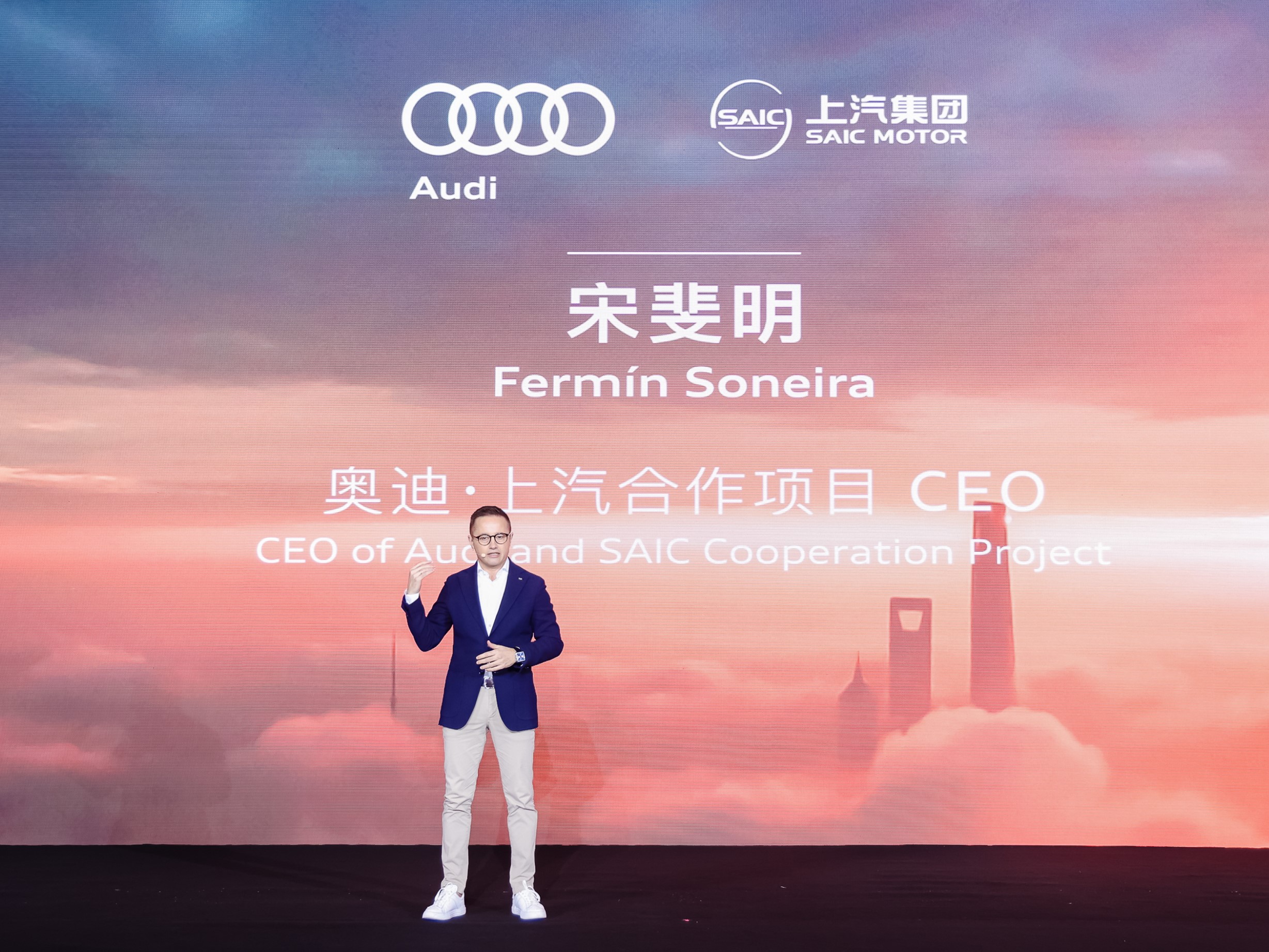
Song Feiming, CEO of the Audi-SAIC cooperation project, delivered a speech
Not only was this project important, it was also difficult. How can we meet the needs of Chinese consumers while meeting global standards? To put it simply, it must be both fast and accurate - the development cycle must be fast and the demand insights must be accurate.
In the current Chinese market, the research and development cycle of a new car has been compressed from 48 months during the traditional car manufacturing period to 18-24 months, so in terms of "fastness", it does not pose a challenge to Audi.
This cooperation will focus on product implementation around the "Advanced Digitized Platform". Not only does its name sound smart, it is actually different from the traditional "model architecture/platform" concept.
In traditional automobile R&D, due to the geographical span, a simple modification requires remaking the model and mailing it to the other party. In this way, traditional R&D methods consume all time in transportation, and the R&D cycle is naturally shortened.
This "intelligent digital platform" can achieve fully digital development. R&D personnel from China and Germany can make real-time modifications and synchronous research and development through a combination of online and offline models, just like the currently popular online documents. Under this model, the efficiency of cooperation projects between Audi and SAIC has been significantly improved.
Not only that, Fermín Soneira, CEO of the Audi-SAIC cooperation project, told The Paper: “When the Chinese team takes a break, the German colleagues will relay the results based on the Chinese team’s results. Our working hours total up to 20 hours a day. "This is not to advocate the involution of "996", but to work together to take advantage of the time difference to achieve the work efficiency of 1+1+1>3 for the R&D personnel of Audi, SAIC and SAIC Volkswagen.
Behind SAIC Audi's new platform, there is a company called "Zero Beam Technology", which is a subsidiary of SAIC Group and will be responsible for co-creating and jointly developing a full-stack smart car solution with Audi DNA with Audi. At present, the full-stack solution for zero-beam Galaxy smart cars has planned four generations of roadmaps. In summary, from AI large models to multi-mode human-computer interaction, from OTA to cross-domain/central integration architecture, everything about intelligent solutions , will be empowered by this company.
As long as SAIC Audi needs it, Zero Beam Technology will output its technical data without reservation.
With the support of a new R&D model and powerful resources, the automobile R&D cycle can be shortened by more than 30%. This innovative model of automobile research and development is undoubtedly a new productive force spawned by the Audi-SAIC cooperation project and a qualitative change that subverts the traditional thinking of car manufacturing.
However, although China's smart electric vehicles lead the world, they have also entered the close-fitting stage after product convergence. For Audi, how to maintain rapid response to the Chinese market while maintaining "Audi's style" is also worth thinking about.
In this regard, Song Feiming believes: "The new platform is mainly developed based on Audi's vehicle production needs, so each product will inherit the Audi brand DNA." In terms of hardware, Audi will continue its control and pursuit of details and insist on using high-end materials. In terms of software, cutting-edge intelligent network technology will be applied to products, and Audi's high-end driving experience and systems will also be integrated into the model definition.
If you could sum up Audi's product strategy under SAIC's new platform in one sentence, it would be "Audi electric vehicles based on the new productivity of China's new energy vehicle industry."
By then, technologies such as high-rate fast charging and central integrated architecture that are currently regarded as moats by new car-making forces will no longer be their "patents." As the entire industry gradually makes progress in terms of technology configuration and development efficiency, "standards" and "style" have become important indicators for classifying brand levels.
As Song Feiming said: "No matter how fast you go, if you can't meet Audi's requirements, this thing will definitely not be used."
From introduction to export, China’s automobile industry ushered in a new era of joint ventures
From a corporate perspective, the cooperation between Audi and SAIC is Audi's attempt to better meet the expectations of Chinese consumers.
From an industry perspective, the development of new energy vehicles is the only way for my country to move from a major automobile country to a powerful automobile country. The cooperation between the two parties is the latest practice guided by this slogan.

SAIC and Audi have signed a cooperation agreement to further strengthen cooperation
In the past ten years, my country's annual sales of new energy vehicles have increased from less than 100,000 to 9.495 million, an increase of more than a hundred times. Annual overseas sales increased from 86,000 vehicles to 1.208 million vehicles, an increase of 14 times. In this process, from the "863 Plan" to the "Ten Cities Thousand Vehicles" plan, from high subsidies to market-oriented competition, our country has also experienced various battery technology routes and various power drive mode choices. Under the baptism of long-term internal competition and survival of the fittest, my country's new energy automobile industry can be said to have become the world's leading company.
When overseas car companies have the absolute right to speak in joint ventures, the Chinese team "has the final say"; when "market exchange for technology" becomes "reverse export of technology"; when overseas brand models change from "increasing prices to make money" "Breaking bones"; when Chinese car companies begin to occupy the main stages of major European and American auto shows; when the number of "international friends" seen at the Beijing Auto Show rivals that of Chinese people, the "new joint venture era" with Chinese brands as the core has arrived.
Just as the theme of the press conference on May 20th expresses the meaning of "sharing the beauty and sharing the beauty, starting a new chapter together", from the old joint venture era to the new joint venture era, the relationship between the joint venture car companies has also experienced "each has his own beauty, and everyone has his own beauty. The evolution of "sharing the beauty and the beauty, the world is unified".
Audi is not just a "capitalist" in the land of China, and China is not just a "market" for Audi. The two parties have used their most cutting-edge technical reserves to deepen cooperation. Not only is Audi, a century-old luxury brand, in electric The establishment of new brand value in the automotive era also represents the first step in China's automotive technology to empower the world.
